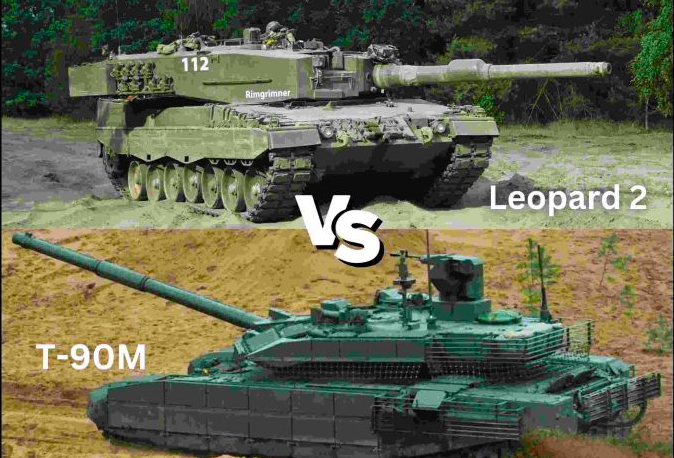The Leopard 2 and Challenger 2 tanks are both modern, Western-designed main battle tanks (MBTs) that are highly capable in a wide range of combat scenarios. Both tanks are heavily armored and equipped with advanced fire control systems and powerful main guns, which allow them to engage targets at long ranges with great accuracy and lethality.
In terms of armor protection, both the Leopard 2 and Challenger 2 are considered to be among the best in the world. They are designed to withstand hits from a variety of anti-tank weapons, including RPGs and anti-tank guided missiles (ATGMs), as well as direct hits from other tanks.
In this analysis, we will compare their performances against various Russian tanks on the battlefield.
T-72 Main Battle Tank
The T-72 tank is an older, Soviet-designed MBT that has been in service since the 1970s. While it has undergone several upgrades over the years, its armor protection and overall combat capabilities are generally considered to be inferior to those of the Leopard 2 and Challenger 2.
However, the T-72 is still a formidable tank, especially when operated by well-trained crews. It is highly maneuverable and has a powerful main gun, which allows it to engage targets at long ranges with a high degree of accuracy.
In terms of specific performance comparisons in general, the Leopard 2 and Challenger 2 tanks would be expected to perform well against T-72 tanks in most scenarios, due to their superior armor protection, firepower, and advanced fire control systems.
That being said, the T-72 can still be a dangerous opponent, especially when operated by skilled crews who know how to leverage its strengths and minimize its weaknesses. In any engagement, the outcome will depend on a variety of factors, including the terrain, the tactics employed, and the skill and training of the tank crews involved.
T-90 Main Battle Tank
The T-90 is one of the most widely deployed tanks in the Russian military. It is an upgraded version of the T-72, featuring improved armor protection and a more powerful engine. The Leopard 2 and Challenger 2 both outclass the T-90 in terms of firepower and protection. The Leopard 2, in particular, has a significantly larger gun and more advanced ammunition, allowing it to engage the T-90 at much longer ranges. The Challenger 2 also has a superior armor protection system that is able to withstand hits from most anti-tank weapons, including those fired by the T-90.
However, the T-90 has some advantages over both the Leopard 2 and Challenger 2. It is much lighter and more agile, making it more difficult to hit with direct fire. It is also equipped with an advanced electronic warfare system, which allows it to jam and disrupt enemy communications and sensors. This can be a significant advantage in modern warfare, where information superiority is critical.
T-80 Main Battle Tank
The T-80 is another widely deployed Russian tank that has seen action in several conflicts. It is a faster and more mobile tank than the T-90, with a higher top speed and better acceleration. However, it also has weaker armor protection, making it more vulnerable to enemy fire. The Leopard 2 and Challenger 2 both outclass the T-80 in terms of firepower and protection, and would be able to destroy it in a head-to-head engagement.
T-14 Armata Main Battle Tank
The T-14 Armata is the newest tank in the Russian military, and it is widely regarded as one of the most advanced tanks in the world. It features a fully automated turret, advanced sensors and communications systems, and a powerful 125mm cannon. The Leopard 2 and Challenger 2 would both face significant challenges in engaging the T-14. Its advanced armor protection and active protection systems make it difficult to destroy with direct fire, and its advanced sensors and communications systems make it difficult to detect and track. The Leopard 2 and Challenger 2 would need to rely on indirect fire and other tactics to neutralize the T-14.
Conclusion
In summary, the Leopard 2 and Challenger 2 are both highly capable tanks that outclass most Russian tanks in terms of firepower and protection. However, the T-90, T-72 and T-80 have some advantages over these tanks, particularly in terms of agility and electronic warfare capabilities. The T-14 Armata represents a significant challenge to both the Leopard 2 and Challenger 2, and would require careful planning and coordination to neutralize on the battlefield. Ultimately, the outcome of any engagement between these tanks would depend on a wide range of factors, including terrain, weather, and tactics employed by both sides.





























































